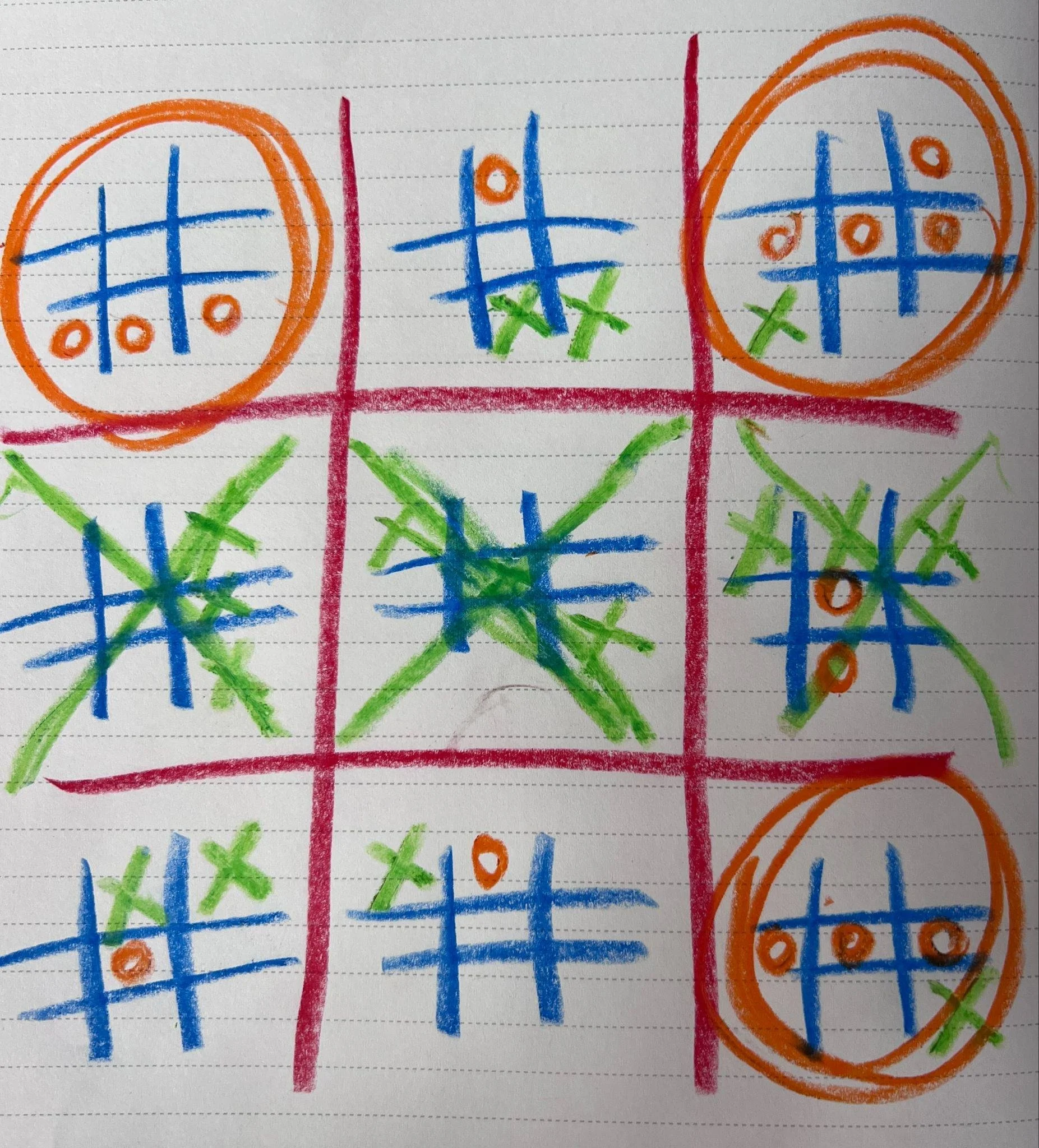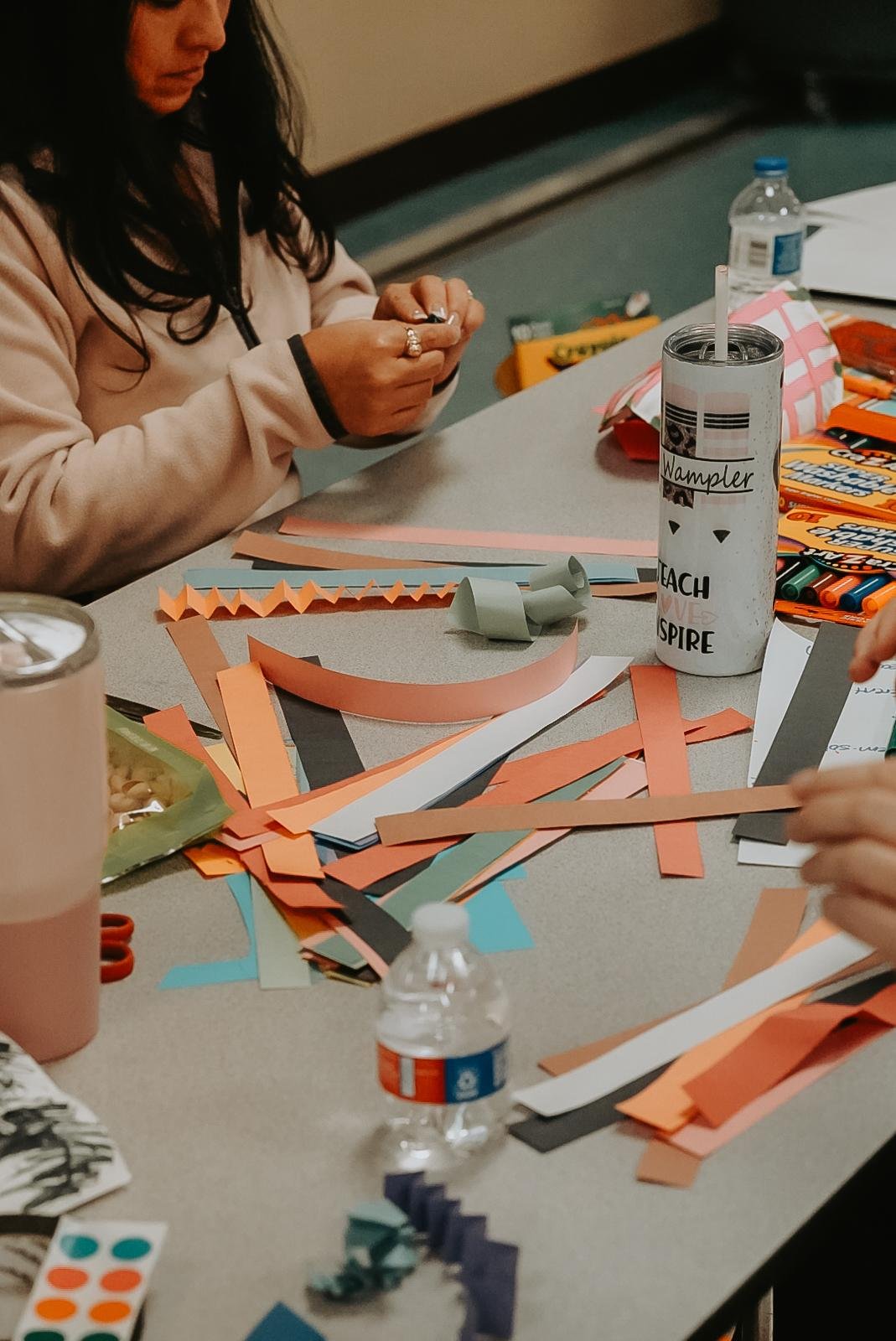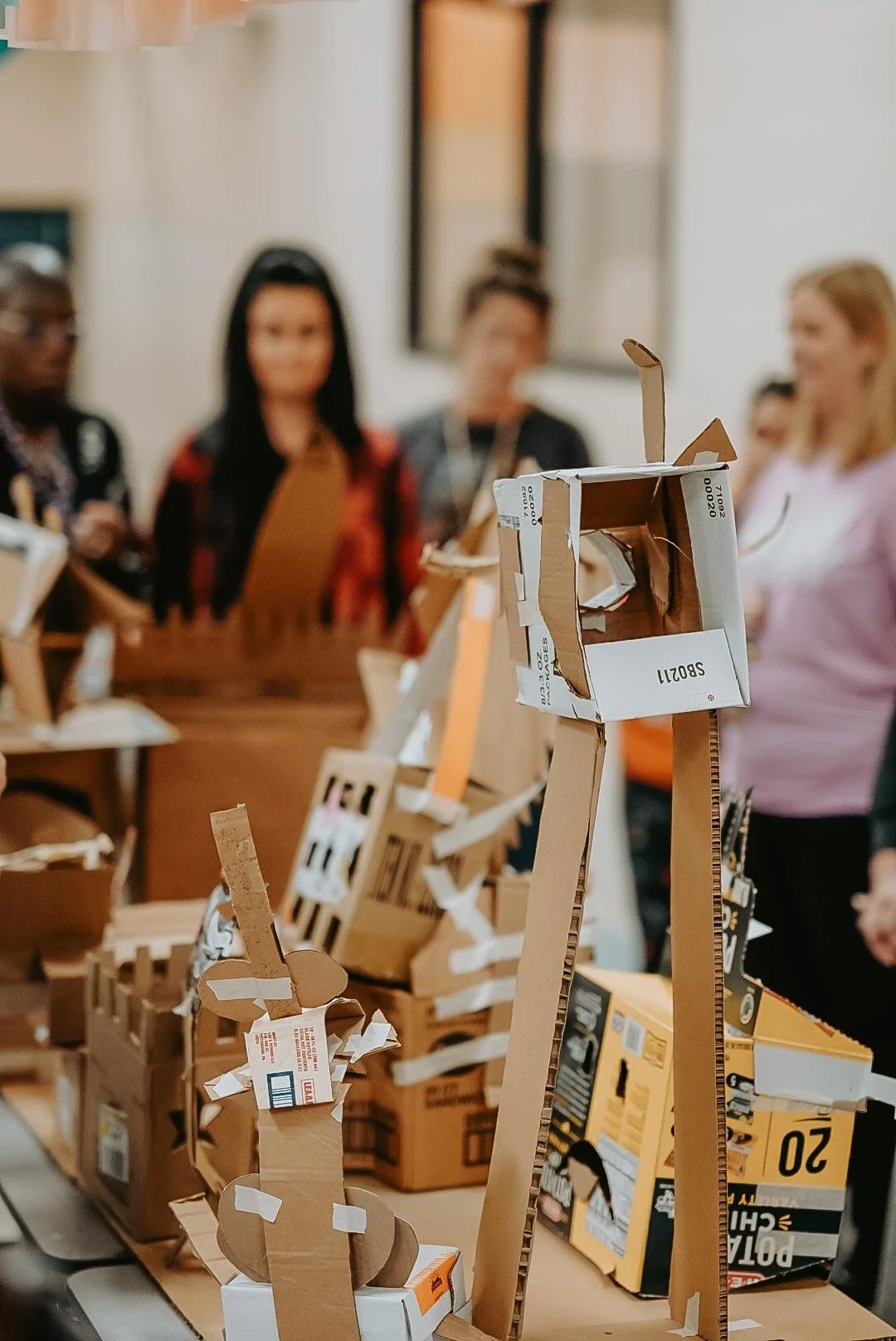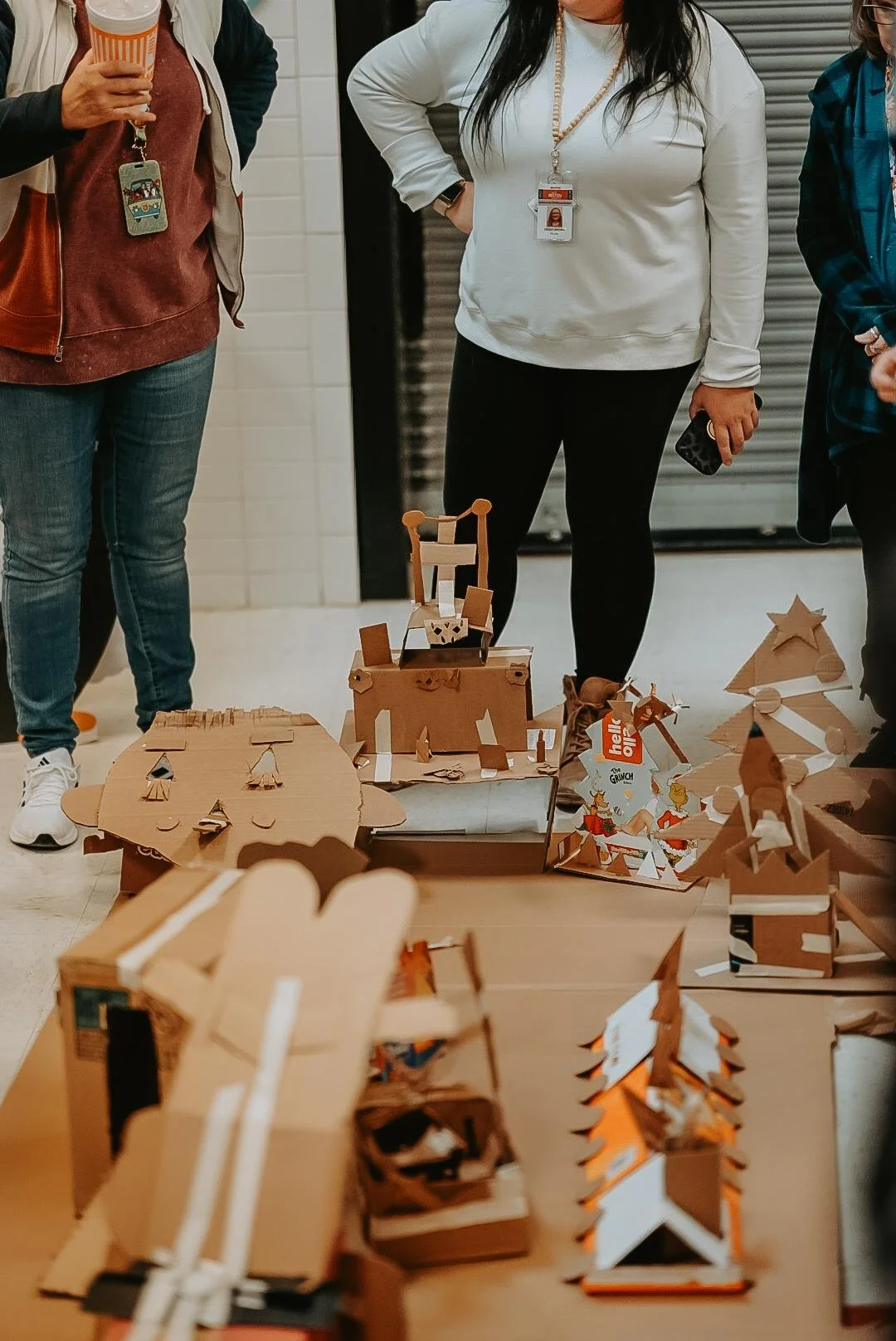3 Ways to Increase Critical Thinking at Your School
The following is a guest blog post by Jed Dearybury!
A few weeks ago, I was working with the amazing faculty at Belton Early Childhood School (BECS in Belton, TX. This is my third school year delivering play-based professional learning to the teachers there, and the administrators asked that I focus our day of learning on critical thinking.
“Critical Thinking” a buzzword we hear often in the EDU world, especially in STEM spaces.
It means to have the ability to effectively analyze information and form a judgment. Sadly, most of the times I have heard this in professional settings it has been used in reference to developing the critical thinking of our students and not us.
Ironically, in order to help others become deeper thinkers, it is best if we first develop our own ability to think critically.
To develop our own critical thinking skills, we must be willing to…
Intentionally try new experiences in our daily lives.
Lean into the discomfort of not knowing “how.”
Reflect on the process and be willing to make changes.
As we do these things, our mind rewires itself to become a stronger problem solver, helping us to look at things with eyes that see solutions rather than obstacles, to find answers rather than excuses.
As a part of the day of professional learning I led for the folks at BECS, I walked them through a few experiences that I specifically chose so that they would experience a bit of disequilibrium and be forced to think in a new, critical manner.
Check out the ideas below and consider participating in them with colleagues, friends, or family so that your brain can strengthen into a critically thinking powerhouse!
1. Super Tic Tac Toe
I could try to explain this here, but it is a bit confusing in a written format, so here is a link so you can watch it: https://www.youtube.com/watch?v=_Na3a1ZrX7c
The gist of the game is that there are 10 total Tic Tac Toe games happening at once. The large grid, then smaller grids in each of the squares of the larger grid.
Let’s say X chooses to start in the bottom left hand corner of the large grid. In the small grid within that square, X plays in the top left space. That will then cause the opponent to place their first O in the small grid found in the top left corner of the large grid. Make sense?
The game continues on until someone wins in one of the smaller grids. If you notice in the pic, the middle right grid was won by X, so X then won the large grid square. The ultimate goal of the game is to win the large grid. Winning the smaller grids is what leads to that.
It can get a bit tricky when the squares you are led to are already won. That gives the opponent a free chance to play anywhere only the grid. It can really shift the game play as the squares lead to opponent wins.
If you are confused, that’s good. That means your brain is processing it, trying to figure out.
It’s why I included the video. Once you understand how play works, you will quickly see how this cultivates your own critical thinking. In order to win, you have to become very aware of the impact of your X/O placement, and how it can affect the placement of your opponents X/O.
2. Paper Possibilities
As the BECS teachers transitioned from the fun of Super Tic Tac Toe, the following directions were on the screen.
“Using the strips of paper at the table, discover how many unique ways there are to manipulate EACH piece. No two pieces should experience the same manipulation. No glue. No scissors. You should work alone, but your eyes may gather new ideas from your neighbors if your brain runs out of them.”
While they were busy playing the game I covered their tables with colorful strips of construction paper.
Each piece was a lengthwise strip about one inch wide. As the teachers began, the ideas were all similar, basic folds on halves and quarters. But as their thinking was forced into new, uncharted areas, they began to twist, tear, spiral, etc. Simply put, they started to explore unique ways to manipulate the paper. It was great!
After several minutes of creative paper manipulations, I asked teachers to then “shop” among all of the newly created paper strips.
They chose 10 from around the learning space to use for their story sculptures. A Story Sculpture is a 3D paper creation that tells a story through the various folds, twists, and turns developed as the learner leans into the paper possibilities. The creator is the only one who really understands the story, but once the sculpture is completed, the story and visual is shared with other participants.
You can see the final work is a great little masterpiece that can then inspire others to critically think about what it might be.
The teachers really got into this and were excited to see how the minds of their colleagues worked. See everyone’s Story Sculptures here on the group
Padlet: https://padlet.com/mrdearybury/paper-possibilities-a9tny1l5g5n2u3r1
A big shout out to art educator Cassie Stephens for inspiring this learning experience. You can read about her original idea of Paper Sculptures here: https://cassiestephens.blogspot.com/2019/08/in-art-room-first-day-of-art-with.html
3. Task Party
In April of 2023, I attended the National Art Educators Association (NAEA) Conference in San Antonio, Texas, and experienced the BEST professional development I had ever been a part of when I joined art educators Samuel Peck @speckx, Eric Scott: @emscottart, and Michael Dodson in their “Task Party” learning experience.
You can see videos of the fun here on my Youtube channel: https://www.youtube.com/@mrdearybury/videos
A Task Party at its heart, is a community-building piece of performance art.
It was first started by conceptual artist Oliver Herring.
Read more about Herring and his work here: https://oliverherringstudio.com/section/363344-TASK.html
In the session with Peck, Scott, and Dodson, we were greeted by tables full of cardboard and tape.
We were given one directive: Create! It was so exhilarating because I had no idea where we were headed.
Long story short, we created… alone, with a partner, with a group. We passed our creations along. We dismantled our creations and started over. We joined our creations with other creations to make one big creation. You can see the final piece of art in one of the videos on the YouTube page above. It was incredible.
All along the journey of creating, the facilitators passed out “task cards” to bring in disruptions to our creative process. Each task was designed to create a shift in our thinking and force us into a deeper level of thinking.
Here are some examples of tasks I was given.
Work only with your non-dominant hand.
Only add star shapes to your creation.
Tape your right hand to the left hand of your neighbor.
Work in silence.
Move your creation to the floor and invite a friend to join you in your work.
Whistle a tune while you create.
Remove tape from your creation and connect it with a new method.
Flip your creation upside down so that the top becomes the bottom.
These are just a few of the experiences that the facilitators put me through as I was working. Each participant had a unique journey in the workshop and it led us all to different outcomes, but somehow we all ended up in the same place.
Our brains were TIRED!
The amount of thinking that occurred over the 2.5 hours of the Task Party was astronomical. The shifts, the struggles, the dips and dives, all intentionally placed before us created such disequilibrium that our minds never rested once during the session. Piaget would have LOVED it!
Of course, I had to take this experience to my friends at BECS. As you can see from the pics below, their task party was a huge success. They dove in head first to the critical thinking experience and the results were incredible!
In order to develop our students’ critical thinking skills, we must be willing to sharpen our own.
These three ideas are just a tiny start of the work we can do to help ourselves so that we can help our learners.
I am always sharing great ideas on my social media platforms, @mrdearybury, and also on the Happy Hours in the Carly and Adam STEM Teacher Membership the second Wednesday of every month. Come join us for these special events to keep your brain growing and thinking!
Have more questions or need additional resources?
You can get all 300+ STEM Challenges by Carly and Adam as part of the STEM Teachers Club Membership. Save $5 on your first month using coupon Code: CarlyAndAdamBlog.
We hope you have found this blog post helpful. To stay connected with Carly and Adam's teaching tips and classroom freebies be sure to follow us on Facebook, Pinterest, Teachers Pay Teachers, and subscribe to our blog!







